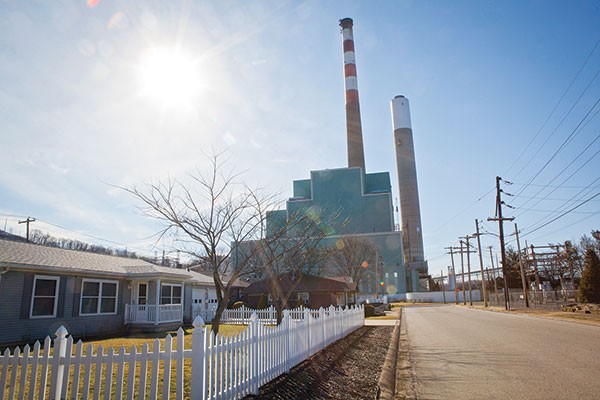One of the biggest sources of air pollution in Allegheny County is about to become more regulated.
A proposed permit from the Allegheny County Health Department would significantly reduce permitted annual emissions at NRG Energy’s coal-fired Cheswick power plant. The plant would also be required to run pollution-reducing equipment most of the time.
“We’re very pleased with the way [the proposed new regulations] came out,” says Randy Francisco, of the Pennsylvania Sierra Club’s coal-to-clean-energy campaign.
Francisco and residents who live near the plant have been fighting for a stricter permit since last year.
“I live in Springdale, and I can see the plant right from my front porch. It’s about a block from me,” says Barb Szalai, who has canvassed the neighborhood, talking to residents about the plant and the need for greater restrictions. “I’d like to see them be a better neighbor and provide us with a better quality of life.”
The new permit would restrict emission levels for sulfur dioxide (SO2), nitrogen oxides (NOX), particulate matter smaller than 2.5 microns (PM2.5) and sulfuric-acid mist. The department is seeking public comment on the proposal prior to an Aug. 1 hearing.
Another Springdale resident, Marti Blake, complains of having to wipe black dust from her patio furniture every two days; she said she showed the black rag to Allegheny County Executive Rich Fitzgerald when she and members of the Sierra Club met with him. (Fitzgerald had no comment for City Paper and said he trusts the health department with permitting.)
“I’ve actually been going door to door to let people know what’s going on with the power plant,” says Blake, whose living-room window faces the facility.
Blake suffers from asthma, and both she and Szalai, who’ve lived there for decades, have been diagnosed with cancer (and are in remission). They say they’re unable to prove that the cancer is caused by living near the plant. “That plant needs to be out in the boonies somewhere where there’s no civilization,” Blake says.
Comparing the plant’s former permit to the new draft, health-department deputy director Jim Thompson says the amount of allowable SO2 would decrease by 59 percent; allowable NOX by 48 percent; PM2.5 by 25 percent; and sulfuric-acid mist by 80 percent.
However, the plant has not been running at full capacity, as cheaper natural gas prices have driven down demand. Thompson says that if the plant ran at the same rate as it did in 2014, NOX emissions should be reduced by about 70 percent.
According to the U.S. Environmental Protection Agency, SO2, sulfuric-acid mist and NOX released into the atmosphere cause acid rain and form ozone (which forms smog). Exposure to SO2 can also affect the respiratory system, causing asthmatic symptoms. Also, the EPA says, “numerous scientific studies connect particle pollution exposure to a variety of health issues” including reduced lung function, asthma attacks, heart attacks and premature death in those with lung or heart disease. These pollutants can travel in the wind for long distances, affecting surrounding areas.
The EPA recently tightened the limits on those pollutants, which is why Thompson says the health department has written such a strict permit.
“We feel the facility can easily and economically meet these emissions limits,” Thompson says.
David Gaier, spokesperson for NRG, the plant’s owner, wrote via email that the company “is looking at it [the permit] in detail regarding all the specific emissions limits.”
Thompson expects NRG will comment at the Aug. 1 hearing.
Some organizations, including local air-pollution watchdog Group Against Smog and Pollution, maintain that the health department needs to more stringently measure SO2 emissions coming from Cheswick.
“Cheswick remains the largest source of SO2 emissions in Allegheny County. … Nevertheless, there is no monitor installed and operated to ascertain concentrations of SO2,” GASP wrote in a June 23 public-comment letter.
In response, Thompson tells CP, “our modeling shows that under limits established in this permit, we will meet [the EPA standards].” He adds that the department will continuously monitor SO2 emissions.


